It is late afternoon on a beach not far from Galle on the southwestern tip of Sri Lanka. Every day around this time, as the shocking heat turns slightly cooler, a flock of swallows begin their show. They come in a swarm of thousands, their black wings sharp against the rose-tinted sky. They swirl like fireworks, dipping and dancing above the sea before rushing over our heads toward the two trees they curiously migrate to each evening. This time of day has a strange electricity to it in Sri Lanka, summoning the evening hours with the sudden eruption of street food and small gatherings of friends. At five o’clock, locals descend upon the country’s countless hopper stands. Visitors seeking this iconic Sri Lankan snack during the day will be met with a friendly shake of the head, as locals point to their wrists and say, “5 o’clock.” And, just like clockwork, the small, glassy hopper counters that line the streets suddenly grind into action when that magic hour arrives.
Sri Lanka’s people have a lot in common with their cuisine. They’re warm, generous and vibrant. They bring with them the promise of comfort and restoration. Food comes at every turn, offered by grinning vendors, busy cooks, and stall owners displaying their goods like precious gems.
From the ethereal coastlines and fishing villages to the heady cities and scorching towns, Sri Lanka’s culinary landscape exists outside on the street. Centuries of Malaysian, Portuguese, Dutch, English and Arabic influence has marked the heritage of Sri Lanka’s cuisine. These traders made use of its exquisite produce, all of which can be found in the marketplace today. The food here is tactile, ready to be consumed on the spot. Spicy clouds of street food fill the air, pluming from carts selling shriveled chilies dusted in salt or fruits boiled down with spices to make a sticky, saccharine hot drink. In Sri Lanka’s villages and towns, there are no supermarkets, no megastores, no malls. Instead, the outdoor market is the nucleus of any place.
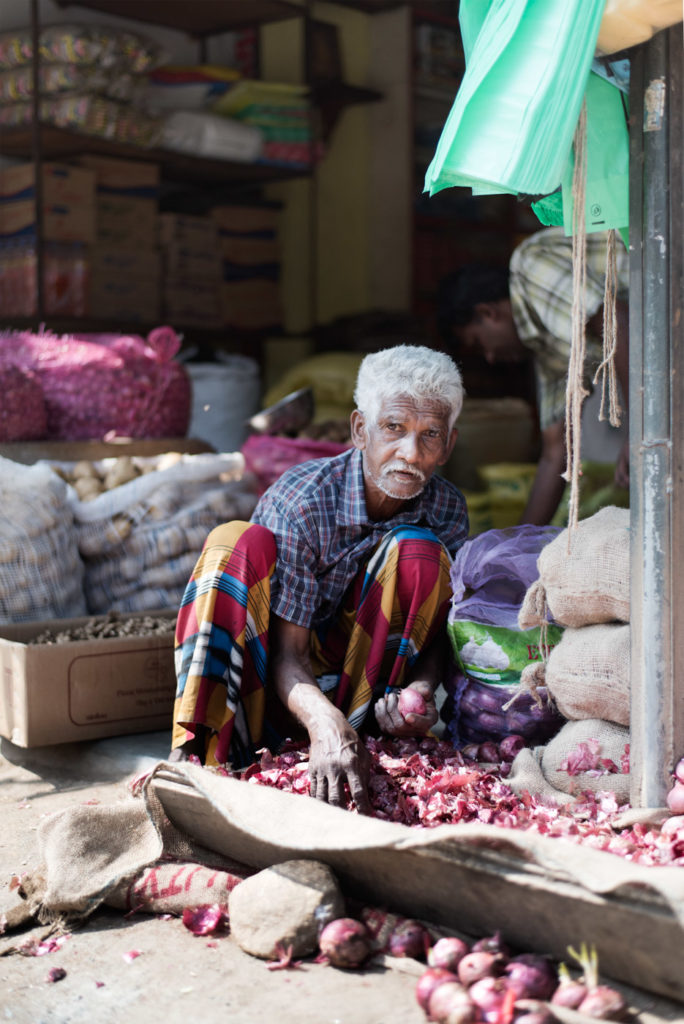
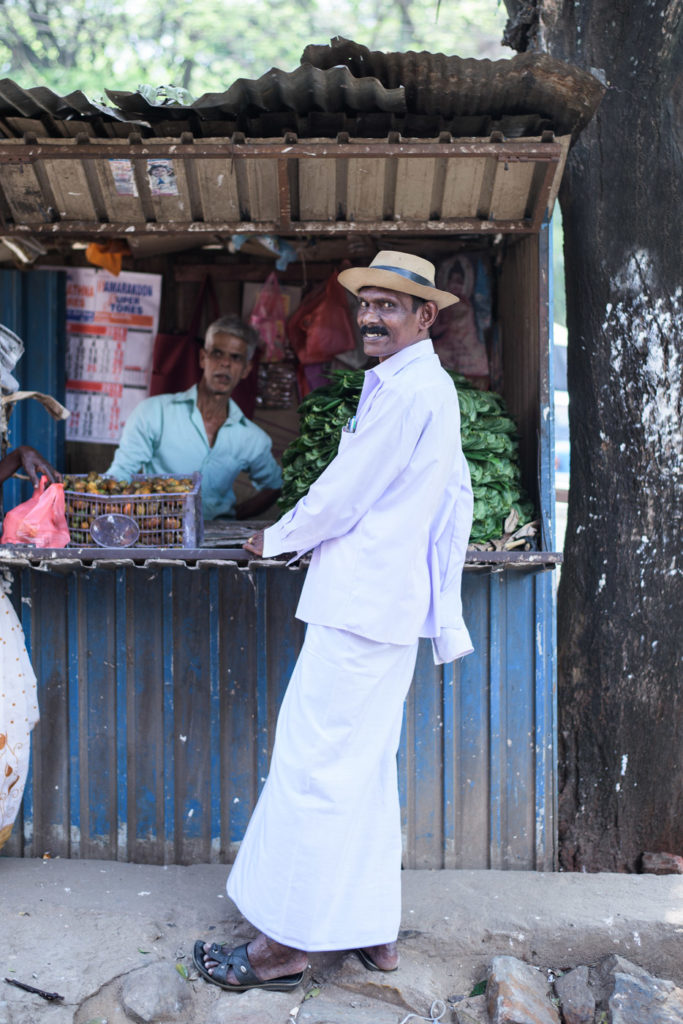
Locals visit these intoxicating food markets two or three times a day, plucking up produce to create their meals, which are made up of several small dishes and are always shared. Sri Lankans put freshness above all else, visiting the market to pick up coconuts just fallen from the trees, or fish that still glisten with salt water. Market vendors take pride in their stalls, sorting their heaving piles of produce by color. To visit a Sri Lankan marketplace is to feast on the country’s rich tapestry of fruit, vegetables and spices born from scorching dry seasons and dramatic monsoons.
The dreamlike foods are laid out, sprawling across the ground in wooden crates or canvas sacks. Sri Lanka’s bewildering medley of fruits and vegetables is more vivid and sundrenched than you will ever see again: lilac eggplants streaked with crayon lines of white, nutty purple mangosteen, jade-colored runner beans, peachy pumpkins, vanilla-scented red bananas, and miniature watermelons that fit in the palm of your hand. On the fringes of the markets you will find stacks of silvery dried fish, ready to be crumbled into curries. The air is sticky and often cloying, but relief comes in the form of sugary, cooling narang juice or creamy coconut water. Sweetness offers an antidote to the heat, while hot, spicy snacks play along with it. The soul of this precious island is its nature, its endless stretches of greenery, beguiling tea hills, and beaches lined with old, rainbow-colored fishing boats. And at every turn, the rickety street food stands are there to nourish you, restore you, refresh you, or just remind you that you could be nowhere else on earth but the Spice Island.
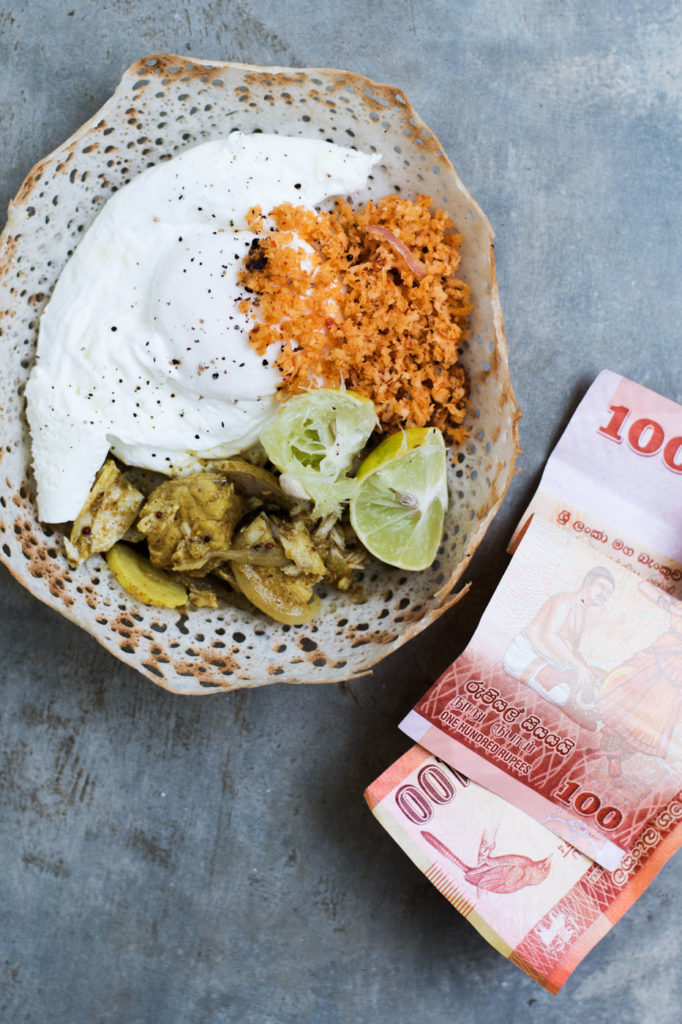
Hoppers (Appam)
The egg hopper is the good old friend of Sri Lankan cuisine. Hopper stalls seem to pop up on every corner, their paint crackling in the sun. The feather-light, bowl-shaped pancake is made using a batter of fermented rice and coconut milk. The vendors ladle and softly swirl the liquid, placing it on the heat for a few seconds until its corners begin to crisp and lift at the edges. Then comes the egg, cracked open and poured into the pancake. The golden yolks beam up, paling as they cook. Hopper vendors stand side by side, talking as their hands do all the work. It is a sight that quickly becomes a comfort. They finish each hopper with a crack of black pepper, immediately beginning work on the next; it’s impossible to just have one. Ordinarily, a bag of seeni sambol can be found somewhere around the griddle—a sweet, warming chili relish that gently cuts through the soft flavors. Beside that, a bag of coconut sambol—white in color and cool in flavor—counteracts the heat. There is an artless beauty to this trusted snack, and it is sacred in its simplicity.
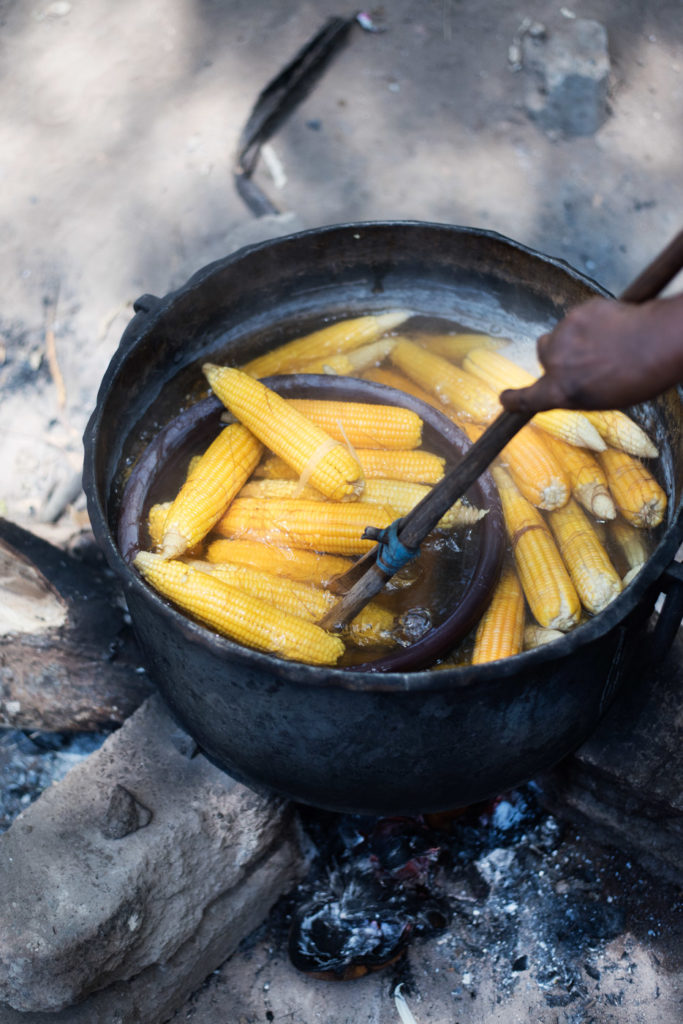
Corn
Trailing the Sri Lankan roads, you will often come upon wide cauldrons of heavily salted water spitting up into the air, perched upon burning logs. Inside the water, plump sticks of sweet corn are softening, ready to be brushed with fiery chili and lime juice. The vendor sits on his haunches, tearing the skins and leaving a mound of grass-green leaves at his side.
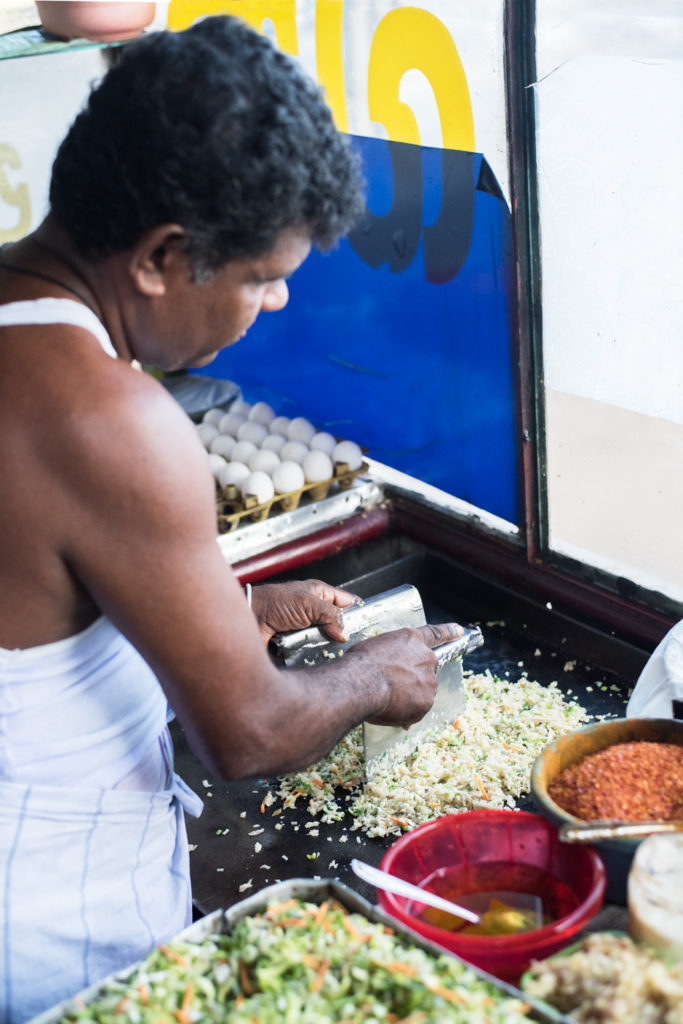
Kottu
Another image that clings to the memory of Sri Lanka is the sight of kottu being cooked, so fast and practiced that it blurs before your eyes. Balls of soft dough are slapped, spun and stretched onto a hotplate to make roti. The bread is thin and lets the light in as it twirls. It cooks quickly, with small bubbles jumping up as it turns golden brown. Each sheet is layered on top of the next to create a thin stack of flatbread, then rolled up and sliced into fine pieces. Beside this, oil bubbles away with a medley of chopped garlic and ginger. The scent is enticing, flooding the nostrils of those who wait. These shards are muddled with a mixture of egg, chili, cabbage and carrots, which are chopped and tossed using blunt handheld blades. This is Sri Lankan comfort food, warming and restoring in its spirited simplicity.

Candyfloss
Sri Lanka’s former capital is Kandy, a chaotic city with Kandy Lake at its center and surreal pink trees scattered across its surrounding hills. The mountains punch the sky in the distance, milky and blurred, and it is commonplace to buy little cones of dried insects to throw into the water and feed its abundant carp. It seems only fitting, in this dreamlike setting, to find merchants selling spun sugar the color of roses. We come across a candyfloss seller beside the lake one afternoon, his bright pink threads buried inside a blue tin. He scoops out the sugar and pressed it into white paper cones, smiling as we tear away at it like children.
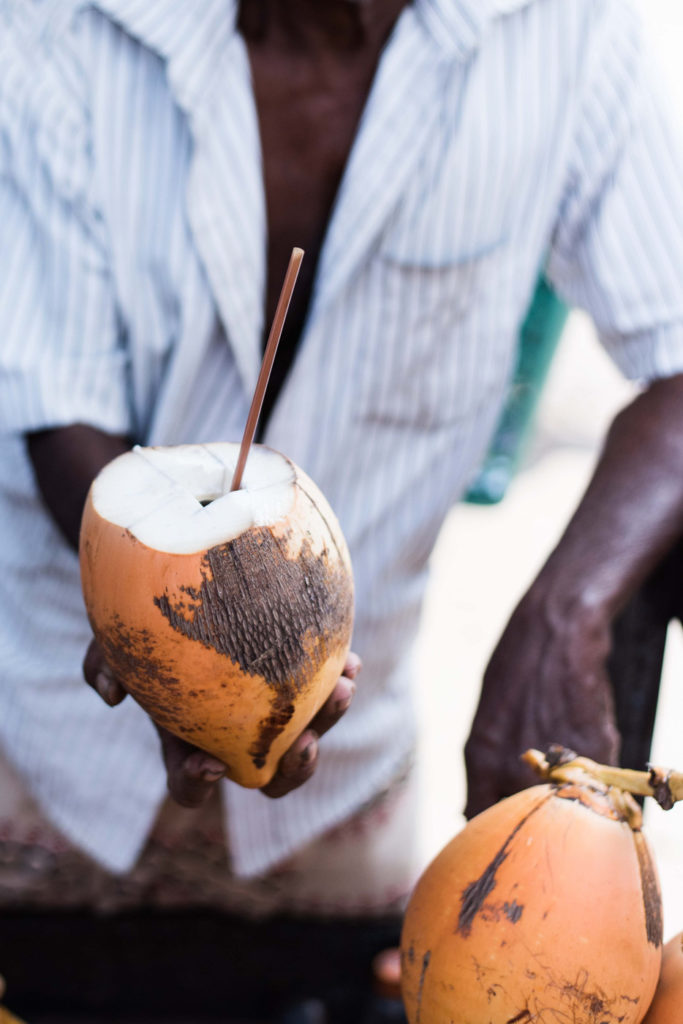
Coconut Water
When the heat hits, locals gulp down clear, creamy coconut water straight from the fruit. The most prized is the King Coconut, which is indigenous to the island—and there is never one far away. They lie or hang in crowded bunches, peach in complexion with bruises marking their fall from the tree. Sellers balance them in one hand and hack off their lid with sharp knives. Locals hold the coconuts up high, pouring the liquid into their mouths before tossing the shell to the side. After tasting this water’s cool sweetness, you will begin to keep an eye out for the jeweled palm trees that fill the island’s skies.
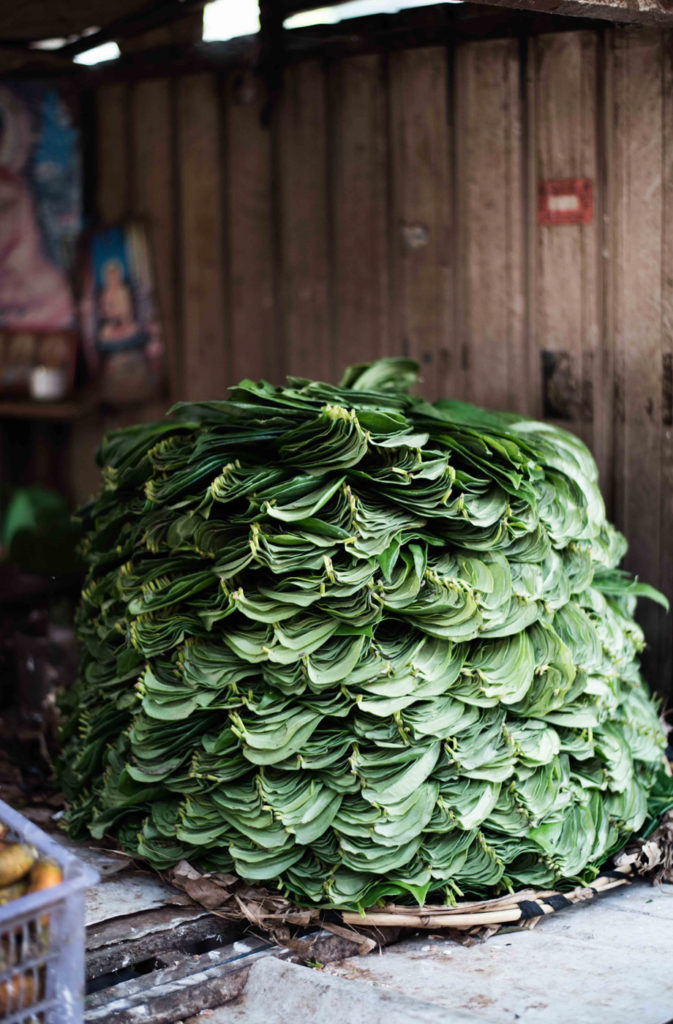
Betel Leaves
Although few outsiders indulge in the habit, many locals gravitate toward street stalls selling betel leaves, which are stacked in glossy green towers. Regulars stop by to pick up their supply for the day, often staying awhile to talk. Chewing on the leaves was once a habit reserved for aristocracy, but it’s now a common vice. Some say betel leaves have medicinal benefits. Some comment on their stimulating effects. Others suggest it offers refreshment and cools the mouth. But many shy away from them, noting the stained teeth of regular users. Whether one choses to chew or not to chew, the twisted fans of this wide, heart-shaped leaf are a striking vision on Sri Lanka’s streets.
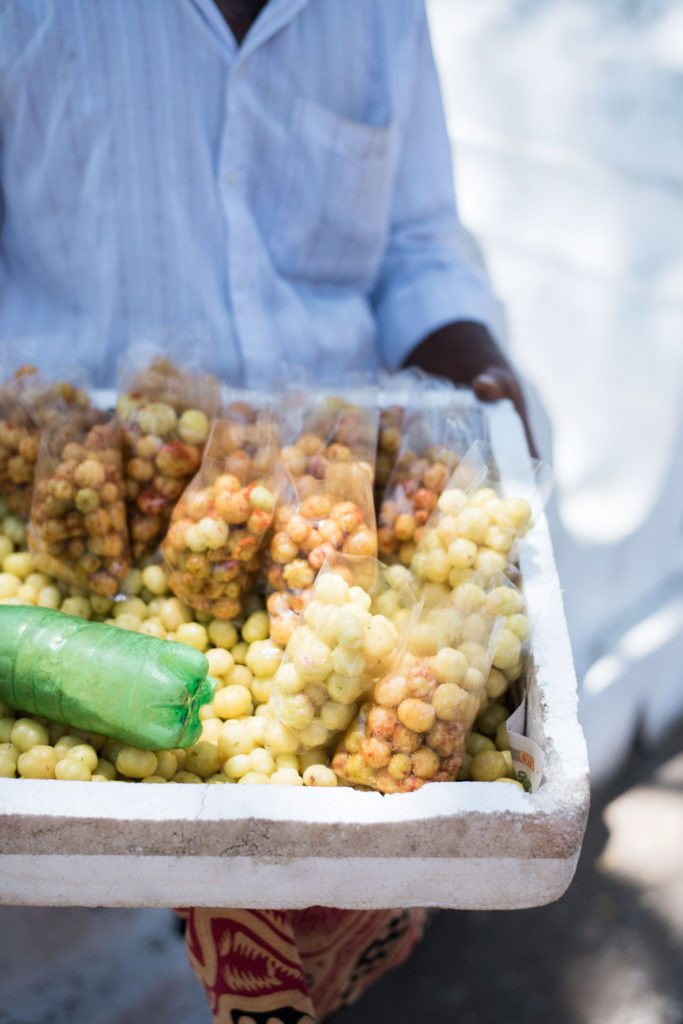
Garbanzo Beans and Garlic
Pale, soft chickpeas tumble from bags and large steel bowls, balancing on cobalt blue- and tangerine-colored carts parked on the roadside. The carts’ owners spoon the beans into small bags before adding a bright, spicy paste and a handful of coarse coconut shavings. More often than not, the same cart will serve whole roasted garlic, brushed with chili powder. The amber-colored bulbs bulge, their insides smooth and melted. It remains a mystery to us how often we manage to reach the bottom of the bag in minutes, marveling at the bustling surroundings while the chickpeas crumble in our mouths, the garlic slipped from its skin and our fingers turned red with chili.
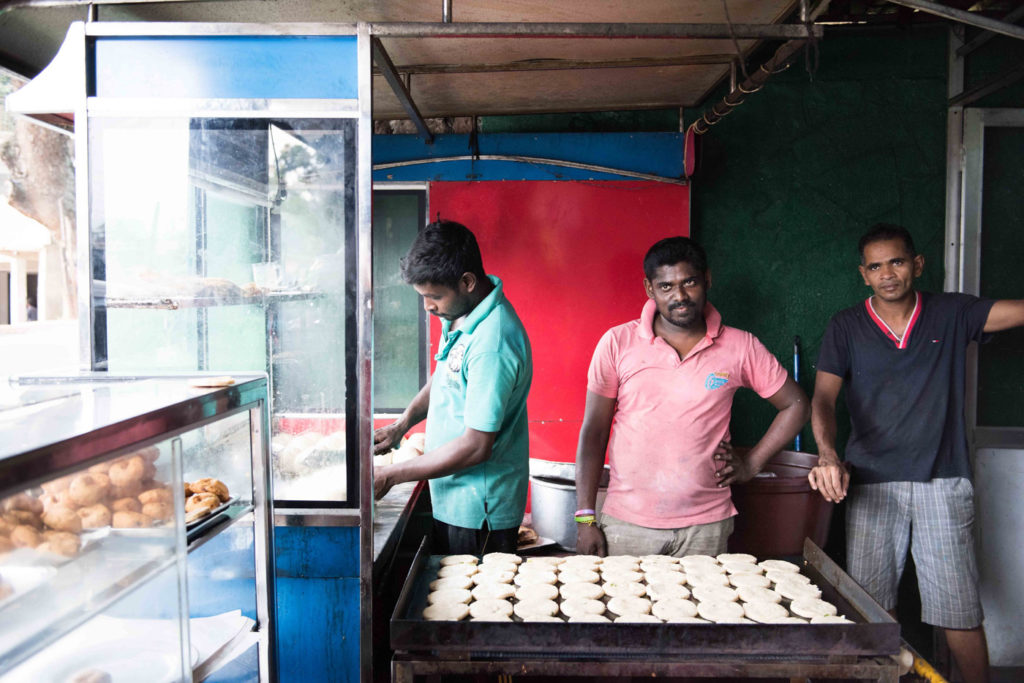
Coconut Rotis
Most Sri Lankans agree that for food’s textures and flavors to be truly enjoyed, one must eat with their fingers. They connect with their food, scooping it up and turning it in their hands. Rotis are used to scoop up curries and the last drops of sauce, accompanying most Sri Lankan meals. Stalls, stands and shops dedicated to their many varieties can be found on every street. But it is the soft, comforting coconut kind that escorts most of our street feasts. They add mellow sweetness to the hottest dishes, made by frying the dough with fresh peels of coconut.
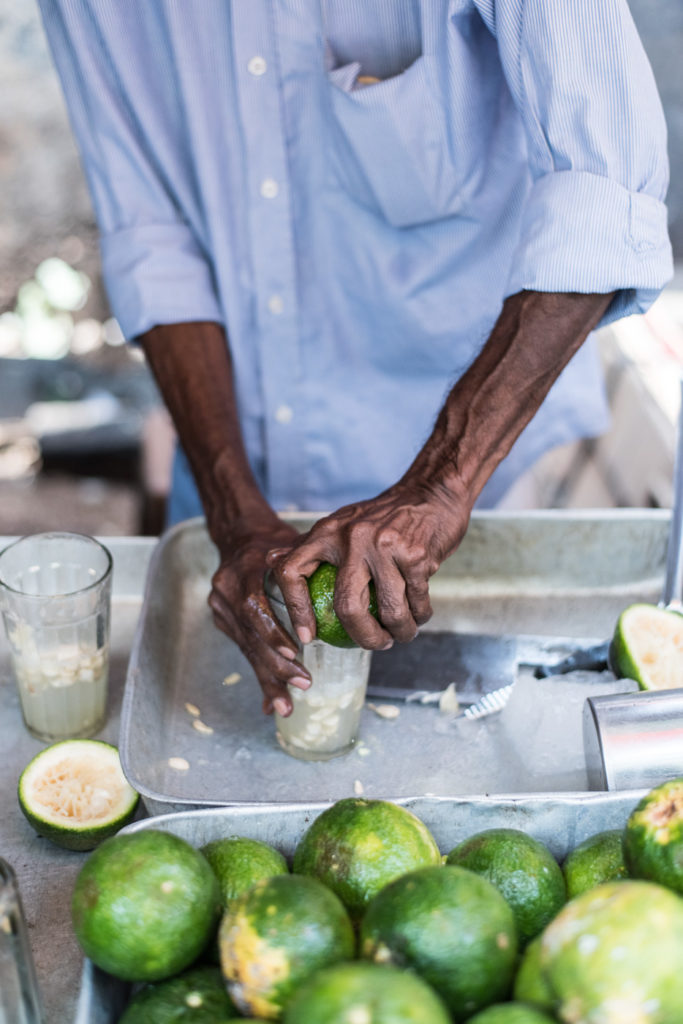
Narang Juice
As green as a lime and as sweet as an orange, narang stalls always seem to appear at exactly the right time. Stall owners smash up blocks of cloudy ice before slicing the fruit in half and squeezing out the juice, vigorously dragging the flesh around the rim of the glass to coax out the last drops of sweetness. In the cloying heat of the market, or out on the streets, the juice of this curious fruit offers redemption. If only for a moment.







Our comments section is for members only.
Join today to gain exclusive access.